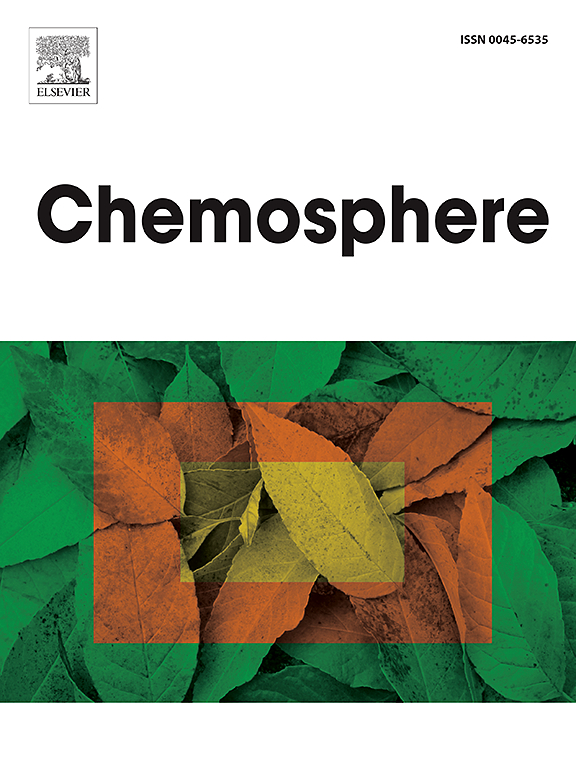根据泰国环境空气污染对死亡率的短期影响制定全国空气质量健康指数。
IF 8.1
2区 环境科学与生态学
Q1 ENVIRONMENTAL SCIENCES
引用次数: 0
摘要
空气质量健康指数(AQHI)作为一种环境健康风险沟通工具早已被引入。基于流行病学方法,它考虑了许多空气污染物的综合影响。然而,泰国的综合水质卫生保健发展仍然存在。本研究旨在制定泰国国家空气质量卫生指标,并确定是否应该制定针对特定性别和年龄的空气质量卫生指标。空气质量指数是通过使用时间分层病例交叉设计和条件泊松回归模型,研究与短期暴露于多种空气污染物相关的死亡风险来构建的。该分析利用了2017年至2020年泰国31个省份的数据。计算了空气动力学直径为10 μm (PM10)或2.5 μm (PM2.5)的颗粒物,以及二氧化氮(NO2)、二氧化硫(SO2)、地面臭氧(O3)和一氧化碳(CO)等5种标准空气污染物的死亡风险,构建了国家空气质量指数,并将其缩放到0到10的范围。根据年龄和性别分别制定了空气质量指数,探讨了与所建立的空气质量指数相关的死亡风险,并将其与空气质量指数(AQI)相关的死亡风险进行了比较。我们发现总空气质量指数、性别和年龄特异性空气质量指数与死亡率高度相关。空气质量指数对死亡率的影响略高于空气质量指数,但两者的模型拟合统计数据具有可比性。综上所述,由于其分布和效果与总空气质量指标相似,因此没有必要制定特定的空气质量指标。空气质量指数似乎是传达与空气污染有关的健康风险的更好工具,因为与空气质量指数相关的死亡风险比与空气质量指数相关的死亡风险更明显。本文章由计算机程序翻译,如有差异,请以英文原文为准。
Development of the national Air Quality Health Index based on short-term effects of ambient air pollution on mortality in Thailand
The Air Quality Health Index (AQHI) has long been introduced as an environmental health risk communication tool. Based on an epidemiological approach, it considers the combined effects of many air pollutants. However, comprehensive AQHI development for Thailand remains. This study aimed to develop the national AQHI in Thailand and determine whether sex- and age-specific AQHIs should be developed. The AQHI was constructed by examining the mortality risk associated with short-term exposure to multiple air pollutants using a time-stratified case-crossover design with the conditional Poisson regression model. This analysis utilized data from 31 provinces in Thailand from 2017 to 2020. The mortality risk associated with five criteria air pollutants—particulate matter with either 10 μm (PM10) or 2.5 μm (PM2.5) in aerodynamic diameter, as well as nitrogen dioxide (NO2), sulfur dioxide (SO2), ground-level ozone (O3), and carbon monoxide (CO)—was calculated to construct the national AQHI and scaled it to a range from 0 to 10. The AQHIs were developed separately for age and sex, and the mortality risk associated with this established AQHI was explored and compared with that associated with the Air Quality Index (AQI). We found that the total AQHI and sex- and age-specific AQHIs were highly correlated with a similar association with mortality. The effects of AQHI on mortality were slightly more potent than AQI's, but their model fit statistics were comparable. In conclusion, developing specific AQHIs is unnecessary because their distributions and effects are similar to total AQHIs. The AQHI seems to be the better tool for communicating health risks related to air pollution, as the mortality risk associated with AQHI was more pronounced than that associated with AQI.
求助全文
通过发布文献求助,成功后即可免费获取论文全文。
去求助
来源期刊

Chemosphere
环境科学-环境科学
CiteScore
15.80
自引率
8.00%
发文量
4975
审稿时长
3.4 months
期刊介绍:
Chemosphere, being an international multidisciplinary journal, is dedicated to publishing original communications and review articles on chemicals in the environment. The scope covers a wide range of topics, including the identification, quantification, behavior, fate, toxicology, treatment, and remediation of chemicals in the bio-, hydro-, litho-, and atmosphere, ensuring the broad dissemination of research in this field.
 求助内容:
求助内容: 应助结果提醒方式:
应助结果提醒方式:


